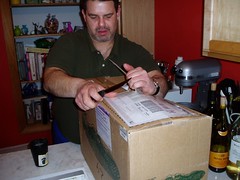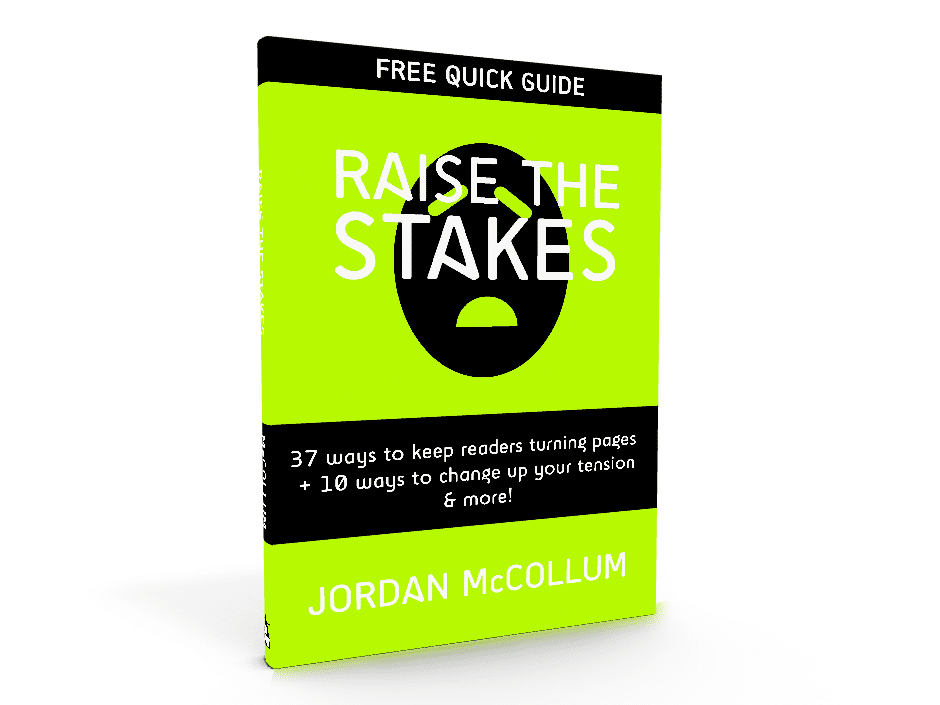We’ve already covered the two most common ways to convey backstory—narration and dialogue—but this is perhaps the most interesting way to share backstory: through the setting (and props within it). While narration and dialogue can definitely set up the conflict that backstory enhances (or creates), using a concrete setting or prop to do the same thing can ground your characters—and vividly symbolize their conflict.
As editor Theresa Stevens puts it (emphasis mine):
Even though backstory relates past events, it sets the stage for current events. Let’s face it — if it didn’t set that stage,
there would be no reason to include it. So perhaps Mark’s purple bathroom becomes important when Grace, his interior decorator, is banned from repainting it. The purple bathroom is symbolic of Mark’s inner landscape, and that’s perfectly fine. In fact, this is how we like it to work: the character’s inner state is made manifest in his outer world.
So think about how your character’s backstory becomes tangible in the physical story world. And then think about how those tangible details can be used as props while the characters are working out their conflicts. This will effectively tie the past to the present in a meaningful way. But one coat of lilac paint is all you need. No need to analyze every bristle on the paintbrush. Present your backstory and return to the present as quickly as possible. You want to sacrifice as little momentum as possible.
Note that this example exemplifies (uh, duh) a great way to do this—it only lets us see that something is up with the purple paint. We don’t stop the story—and interrupt the conflict between Mark and Grace—to spend a paragraph in a flashback explaining Mark’s neurosis. As we read from Chris Roerden last week, “You don’t want to satisfy reader curiosity—you want to increase it” (Don’t Murder Your Mystery, 53).
Editor and author Alicia Rasley (who now writes the blog edittorrent with Theresa, the editor quoted above) says something similar in her article “Backstory Problems“:
Consider how much more dramatic this opening scene might be if Emily unlocks the door of her elegant childhood home, steels herself, walks in, glances around the foyer, sees the chandelier, stops short, and then, resolutely, goes into the dining room, past the table, into the kitchen, and pulling a cell phone from her purse, calls a realtor and says, “I want to sell a house. Immediately. I don’t care how much I get for it.” The readers will be asking, “Wait a minute! It’s a beautiful house! It’s her childhood home! Why does she want to sell it? And if she sells it, why doesn’t she try to get a good price?” On the heels of those questions will come the canny conclusion, “It must have something to do with that chandelier. I wonder what.”
Once you have the readers speculating about the situation you’ve set up, you’ve hooked them. They have to keep reading to get more clues to see if their suppositions are correct.
But if you tell them everything upfront, you might lose the narrative drive that comes from posing the story question, in this case, “Why does Emily want to unload her beautiful childhood home?”
(If the suspense for these two examples is just killing you, check out their full articles for the reasons behind the paint and the chandelier.)
What do you think? How else can the setting and/or props tie in to backstory?
Photo by Alyssa Hill
 5) Giving the protagonist miserable backstory. This is often done in order to excuse some unsympathetic behavior or attitude [and is also a common technique to try to make villains sympathetic]. Yeah, he hates women, but it’s because his mother abandoned him! And his foster mother beat him! And his aunt framed him for murder! And his first girlfriend trapped him into marriage by getting pregnant! And…
5) Giving the protagonist miserable backstory. This is often done in order to excuse some unsympathetic behavior or attitude [and is also a common technique to try to make villains sympathetic]. Yeah, he hates women, but it’s because his mother abandoned him! And his foster mother beat him! And his aunt framed him for murder! And his first girlfriend trapped him into marriage by getting pregnant! And…






